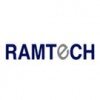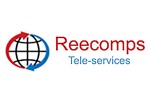Telecom Engineer
40+ Telecom Engineer Interview Questions and Answers


Q. What is the frequency used for 5G, and what are the communication protocols utilized in TCP/IP?
5G uses frequencies in the range of 600 MHz to 6 GHz. TCP/IP communication protocols include TCP, IP, UDP, and ICMP.
5G frequencies range from 600 MHz to 6 GHz
TCP/IP protocols include TCP, IP, UDP, and ICMP
TCP (Transmission Control Protocol) ensures reliable data delivery
IP (Internet Protocol) handles addressing and routing
UDP (User Datagram Protocol) is used for faster but less reliable communication
ICMP (Internet Control Message Protocol) is used for network troubleshooting

Asked in Magnasoft Consulting India

Q. What is driveways and sidewalk? Why we will capture?
Driveways and sidewalks are pathways for vehicles and pedestrians, respectively, leading to buildings or properties.
Driveways are private roads leading to a garage or parking area for vehicles.
Sidewalks are pathways for pedestrians to walk alongside roads or buildings.
They are important for providing access to buildings and properties.
Driveways and sidewalks help improve the overall aesthetics and functionality of a property.
Capturing driveways and sidewalks is essential for ...read more
Telecom Engineer Interview Questions and Answers for Freshers

Asked in RAMTeCH Software Solutions

Q. What is different size of fiber ? And which one where is used ?
Different sizes of fiber include single mode and multimode fibers, used based on distance and bandwidth requirements.
Single mode fiber has a core size of 9 microns and is used for long distance communication.
Multimode fiber has a core size of 50 or 62.5 microns and is used for shorter distances.
Single mode fiber is used in applications like telecommunication networks, while multimode fiber is used in LANs and data centers.

Asked in Magnasoft Consulting India

Q. Why is it necessary to capture all utilities?
Capturing all utilities is essential for proper planning, maintenance, and troubleshooting of the network.
Capturing all utilities helps in identifying potential conflicts or overlaps in the network infrastructure.
It ensures that all resources are efficiently utilized and prevents unnecessary duplication of services.
Having a comprehensive record of utilities aids in troubleshooting and quick resolution of network issues.
It is crucial for proper planning and expansion of the ne...read more
Asked in Page Middle East

Q. What is your experience with ELV systems and which projects have you worked on?
I have extensive experience working on ELV systems, including designing, implementing, and troubleshooting various projects.
Designed and implemented structured cabling systems for office buildings
Installed and configured CCTV cameras for security surveillance
Integrated access control systems with biometric scanners
Troubleshooted network issues in data centers
Worked on fiber optic installations for high-speed internet connections

Asked in RAMTeCH Software Solutions

Q. What is the difference between fiber optic cable and copper cable?
Fiber cable uses light to transmit data while copper cable uses electricity.
Fiber cable has higher bandwidth and can transmit data over longer distances without signal loss.
Copper cable is cheaper and easier to install than fiber cable.
Fiber cable is immune to electromagnetic interference while copper cable is susceptible to it.
Examples of fiber cable include single-mode and multi-mode fiber while examples of copper cable include twisted pair and coaxial cable.
Telecom Engineer Jobs




Asked in Cyret Technologies

Q. What is the meaning of technology?
Technology refers to the tools, techniques, and methods used to create, develop, and improve products and services.
Technology encompasses a wide range of fields, including information technology, engineering, and science.
It involves the use of tools and techniques to solve problems and improve efficiency.
Examples of technology include computers, smartphones, and medical equipment.
Technology is constantly evolving and improving, leading to new innovations and advancements.
It h...read more

Asked in Cyret Technologies

Q. Which temple is the biggest temple in Odisha?
The big temples of Odisha are the Lingaraj Temple, Jagannath Temple, and Konark Sun Temple.
Lingaraj Temple is dedicated to Lord Shiva and is one of the oldest temples in Bhubaneswar.
Jagannath Temple is located in Puri and is dedicated to Lord Jagannath, an incarnation of Lord Vishnu.
Konark Sun Temple is a UNESCO World Heritage Site and is dedicated to the Sun God Surya.
All three temples are known for their intricate architecture and rich cultural significance.
Share interview questions and help millions of jobseekers 🌟


Asked in Cyient

Q. What time should I come to your office?
The timing for arriving at the office depends on various factors like work hours, traffic, and personal schedule.
Typical office hours are from 9 AM to 5 PM, so arriving around 8:30 AM is ideal.
Consider traffic patterns; leaving earlier can help avoid delays.
If you have meetings scheduled, plan to arrive at least 15 minutes early.
Flexibility in work hours may allow for a later arrival if agreed upon with management.

Asked in Cyient

Q. Which project are you selecting me to work on?
Select a project that aligns with your skills and interests in telecom engineering, focusing on innovation and impact.
Consider projects involving 5G network deployment, enhancing connectivity in urban areas.
Look into IoT integration projects that improve smart city infrastructure.
Explore renewable energy solutions for telecom towers to promote sustainability.
Participate in projects that focus on cybersecurity measures for telecom networks.

Asked in Sabre Industries

Q. Do you know about telecom structure?
Telecom structure refers to the physical and logical components that make up a telecommunications network.
Telecom structure includes components such as switches, routers, cables, antennas, and servers.
It also involves protocols, standards, and technologies used for communication.
Examples of telecom structures include PSTN (Public Switched Telephone Network), cellular networks, and the Internet.
Understanding telecom structure is essential for designing, implementing, and maint...read more

Asked in Cyret Technologies

Q. What is the meaning of telecom?
Telecom stands for telecommunications, which refers to the transmission of information over long distances using electronic means.
Telecom involves the use of various technologies such as radio, fiber optics, and satellite communication.
It includes services such as voice calls, messaging, internet connectivity, and broadcasting.
Telecom plays a crucial role in connecting people and businesses across the world, enabling communication and collaboration.
Examples of telecom compani...read more

Asked in Bajaj Finserv

Q. Do you have any prior work experience?
Yes, I have relevant work experience in telecom engineering, focusing on network design and optimization.
Worked as a network engineer at XYZ Telecom, optimizing network performance by 30%.
Participated in the deployment of a 5G network, ensuring compliance with industry standards.
Conducted site surveys and feasibility studies for new telecom installations.
Collaborated with cross-functional teams to troubleshoot and resolve network issues.

Asked in Reecomps Teleservices

Q. What is gsm .and traffic o site
GSM stands for Global System for Mobile Communications. Traffic o site refers to the amount of traffic on a particular cell site.
GSM is a standard for mobile communication that uses digital technology
It was developed to replace the analog cellular network
GSM operates on different frequency bands in different regions
Traffic o site refers to the amount of traffic on a particular cell site, which can affect call quality and data speeds

Asked in Cyret Technologies

Q. What is the full form of BSL?
There is no full form of bsL in the context of Telecom Engineering.
bsL does not have any full form in Telecom Engineering.
It is possible that the interviewer meant to ask about a different acronym.
It is important to clarify any confusion about acronyms during interviews.

Asked in Cyret Technologies

Q. What does LL stand for?
LL stands for Local Loop, which is the physical connection between the customer's premises and the telephone exchange.
LL is also known as the 'last mile' connection.
It is typically made up of copper wires or fiber optic cables.
The quality of the LL connection can affect the speed and reliability of internet and phone services.
LL can be either analog or digital depending on the technology used.
The length of the LL can also impact the quality of the connection.
Asked in Kamat & Rozario Architecture

Q. What is the size of a brick?
The size of a brick varies depending on the region and purpose.
Bricks are typically rectangular in shape.
The standard size of a brick is 9 inches by 4.5 inches by 3 inches.
However, there are variations in size such as modular bricks (7 5/8 inches by 3 5/8 inches by 2 1/4 inches) and oversized bricks.
Different countries may have their own standard sizes for bricks.
Bricks can also be cut or shaped to fit specific requirements in construction.

Asked in V5 Global Services

Q. What does OTDR stand for?
OTDR stands for Optical Time Domain Reflectometer.
OTDR is a device used in fiber optic networks to measure the characteristics of an optical fiber.
It sends a pulse of light into the fiber and analyzes the reflections and scattering of light to determine the fiber's length, loss, and other parameters.
OTDR can locate faults, breaks, and other issues in the fiber optic cable.
It is commonly used for troubleshooting, maintenance, and installation of fiber optic networks.
Example: A...read more

Asked in IMMCO

Q. What is post-tensioning and pre-tensioning?
Post tensioning & pre tensioning are methods of reinforcing concrete structures.
Post tensioning involves applying tension to steel cables after the concrete has been poured and set.
Pre tensioning involves applying tension to steel cables before the concrete is poured.
Both methods increase the strength and durability of concrete structures.
Post tensioning is commonly used in bridges, parking garages, and high-rise buildings.
Pre tensioning is commonly used in precast concrete p...read more

Asked in RAMTeCH Software Solutions

Q. What is the difference between aerial and underground (UG) cables?
Aerial cables are installed overhead while UG cables are buried underground.
Aerial cables are more susceptible to damage from weather conditions and other external factors.
UG cables are more secure and protected from damage.
Aerial cables are easier and cheaper to install while UG cables require more effort and cost.
Examples of aerial cables include telephone poles and power lines while UG cables are commonly used for internet and cable TV.

Asked in RAMTeCH Software Solutions

Q. What ROW,EOP,CL in road
ROW, EOP, and CL are abbreviations used in road construction and maintenance.
ROW stands for Right of Way, which is the land area acquired for the construction and maintenance of a road.
EOP stands for End of Pavement, which is the point where the paved surface of a road ends.
CL stands for Center Line, which is the imaginary line that divides a road into two equal parts.
These abbreviations are commonly used in road construction and maintenance plans and documents.

Asked in Cyret Technologies

Q. What is Telecom engineering?
Telecom engineering is the design, implementation, and maintenance of telecommunications systems.
Designing and implementing telecommunications networks
Maintaining and upgrading existing systems
Working with various technologies such as fiber optics, wireless networks, and satellite communications
Ensuring network security and reliability
Collaborating with other engineers and stakeholders to meet business needs

Asked in Cyret Technologies

Q. What is your gis engineering
GIS engineering involves designing, implementing and maintaining geographic information systems for various industries.
GIS engineers use software to create maps and analyze data
They work with various data sources such as satellite imagery and GPS data
GIS engineering is used in industries such as urban planning, environmental management, and telecommunications
GIS engineers must have knowledge of programming languages such as Python and SQL
They also need to have strong analytic...read more

Asked in Mdn Edify Education

Q. Can you provide a self-introduction?
Telecom Engineer with expertise in network design, optimization, and troubleshooting, passionate about advancing communication technologies.
Educational Background: Bachelor's degree in Telecommunications Engineering from XYZ University.
Professional Experience: Over 5 years of experience in designing and implementing telecom networks for various clients.
Technical Skills: Proficient in network protocols, RF engineering, and troubleshooting tools like Wireshark.
Projects: Led a p...read more

Asked in Cyret Technologies

Q. What does a technical engineer do?
A technical engineer is a professional who designs, develops, and maintains technical systems and infrastructure.
Technical engineers are responsible for ensuring that technical systems are functioning properly and efficiently.
They may work in a variety of industries, including telecommunications, manufacturing, and construction.
Some common tasks for technical engineers include designing and implementing new systems, troubleshooting technical issues, and performing regular mai...read more

Asked in Cyret Technologies

Q. What is effect of engineering
Engineering has a significant impact on society and the world we live in.
Engineering has led to the development of new technologies that have improved our quality of life.
It has helped us to build better infrastructure, such as roads, bridges, and buildings.
Engineering has also played a crucial role in the advancement of communication and transportation.
It has enabled us to explore space and the depths of the ocean.
Engineering has contributed to the growth of industries and e...read more


Q. Which documents are required?
Essential documents for a Telecom Engineer include project plans, technical specifications, and compliance reports.
Project Plans: Outline the scope, objectives, and timeline of telecom projects.
Technical Specifications: Detail the technical requirements for equipment and systems.
Compliance Reports: Ensure adherence to industry regulations and standards.
Network Diagrams: Visual representations of network architecture and components.
Test Plans: Document procedures for testing n...read more

Asked in RAMTeCH Software Solutions

Q. What is the structure of a telecommunications system?
Telecom structure refers to the physical infrastructure and network components that enable communication through telecommunication systems.
Telecom structure includes cables, antennas, towers, routers, switches, and other equipment.
It also encompasses data centers, satellite systems, and fiber optic networks.
Examples of telecom structures are cell towers, underground cables, and internet exchange points.

Asked in V5 Global Services

Q. How many fiber types are there?
There are several types of fiber used in telecommunications.
Single-mode fiber (SMF) - used for long-distance communication
Multimode fiber (MMF) - used for shorter distances
Plastic optical fiber (POF) - used for short-range applications
Dispersion-shifted fiber (DSF) - designed to minimize dispersion effects
Non-zero dispersion-shifted fiber (NZDSF) - optimized for long-haul transmission
Bend-insensitive fiber (BIF) - resistant to bending and suitable for tight spaces

Asked in Truminds Software Systems

Q. Explain the 4G attach call flow.
4G attach call flow involves multiple steps for a device to connect to the network.
Device sends attach request to the network
Network validates the request and assigns temporary identity (TMSI)
Network sends attach accept message to device
Device sends attach complete message to confirm attachment
Network updates location of device in Home Location Register (HLR)
Interview Questions of Similar Designations
Interview Experiences of Popular Companies






Calculate your in-hand salary
Confused about how your in-hand salary is calculated? Enter your annual salary (CTC) and get your in-hand salary


Reviews
Interviews
Salaries
Users










